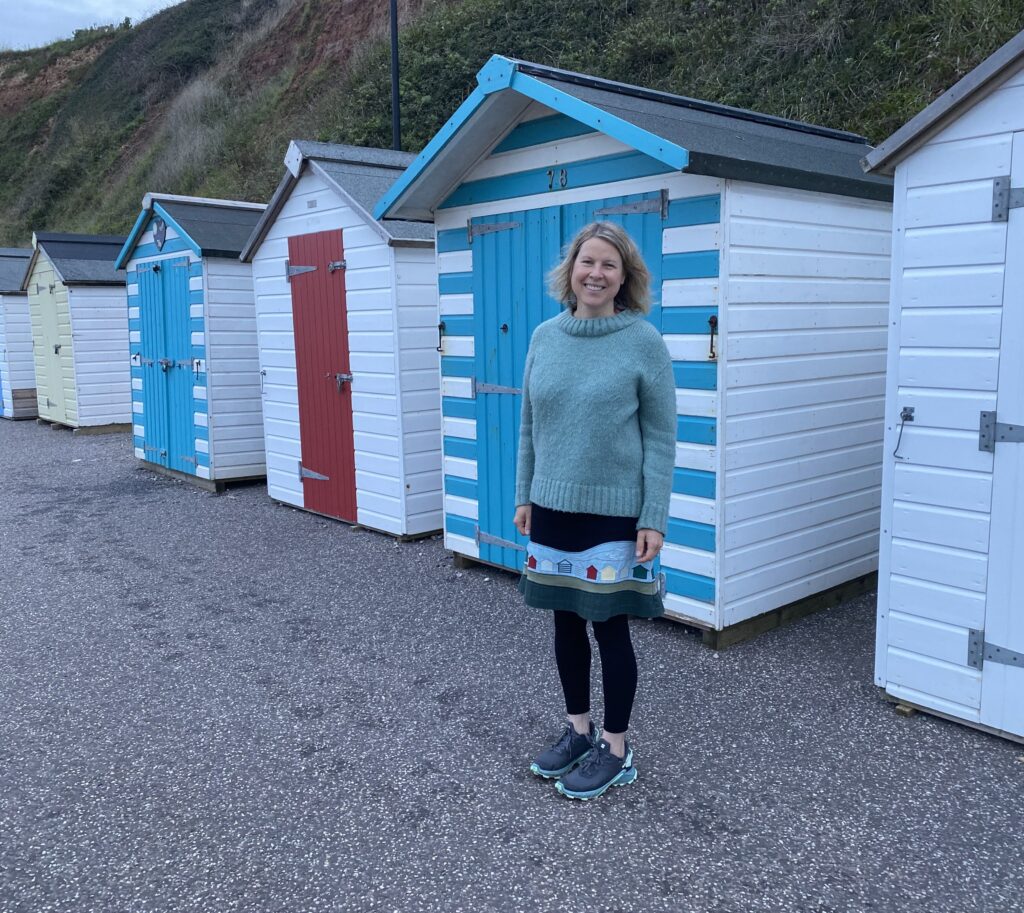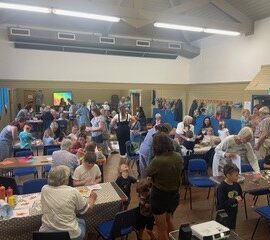A core value of Messy Church is creativity, which often means that we use loads of ‘stuff’ as we learn, remember, and pray through the things we create, reflecting on God’s story and presence in the world. However, we’re living through an age where the cost of ‘stuff’ has increased and we’re increasingly aware of the impact that resource-hungry humans make to our planet. undertake anr how to make our Messy Churches more sustainable, now is the perfect opportunity to undertake an eco-health check, which might save you money, as well as help your church achieve a gold Eco Church award.
But where to start? It can feel a bit overwhelming to change your Messy Church habits, so the first thing to do is to pray and start a conversation with your team. You might not be able to convince everyone to give up glitter straight away and start planting trees in your churchyard, but doing something is better than nothing. As you make a list of the items for your session, consider where they will come from, what are they made of and where will they go when they are no longer needed?

Here are a few top tips to get you started:
- Reduce
- Check the cupboard before planning the activities. Start with ‘ what have we got?’ instead of ‘what do we need to buy?’.
- Encourage activities that are about process rather than end product, which might be less heavy on using materials. For example, try painting with water, obstacle courses, shadow pictures.
- could an activity be done more simply but with the same effect, without having to resort to a craft kit? Are there natural alternatives available? Make use of the seasons and use what’s already around you. For example, in autumn make use of seed helicopters or conkers, or make apple-juice. Pinecones are a handy craft item in Winter and try pressing flowers in spring and summer, press and enjoy water activities outside.
- Take an audit of the amount of printed paper you use. Rather than producing individual maps of the activities, running orders and printed song sheets, have one large masterplan on view as team and participants arrive. Make use of call and response songs and prayers during the celebration, and where tech is available, use a projector. How could you use social media to encourage people between sessions to explore faith in the home, or remind them of your next meeting?
- Reduce your carbon footprint by encouraging the team and participants to walk, cycle, scoot or take public transport to get to your Messy Church. If the team have lots of ‘stuff’ to take, can they car share?
- With the rise in energy costs, could you turn the thermostat down by 1 degree, but still provide a warm hospitable welcome in the winter months? If you have a choice of meeting rooms, what’s the most effective space to heat?
- When it comes to the meal, reduce the road miles by buying locally produced food when you can. Go veggie and use less meat. It’s always hard to predict the amount you’ll need, but a careful choice of menu, where you can add more volume quickly should your numbers swell, is a start.
- Reduce food waste by asking people on arrival if they plan to stay for the meal and think of ways of serving food so that everyone gets the amount they think they can eat. When there is left over food, make it available for families and team to take home.
- Provide a food waste bin for any scraps, if you have a collection in your area, or make a compost bin.

- Reuse
- Avoid disposable items such as single use plastics.
- Make sure you’re using re-usable cups, cutlery and dinnerware. Maybe someone in your wider church community has the gift of washing-up? Alternatively encourage people to bring their own mugs and provide a washing up area.
- Make use of what other people can’t use. Check out the Tearfund Rubbish Messy Church session that makes crafts from rubbish items.
- Recycle
- Actively encourage people (from your wider church community, or your neighbours on your street) to collect materials that can be used for craft activities, for example, metal bottle caps, ring pulls, cardboard tubes, card, paper, wool and plastic milk containers.
- When doing junk modelling, encourage dismantling and recycling at the end. Avoid adding things that would make it impossible to recycle afterwards and look for alternatives.
Useful websites for eco-friendly craft resources:
https://greenecofriend.co.uk/eco-friendly-craft-materials/
https://www.peacewiththewild.co.uk/
https://www.ecoglitterfun.com/
For more ideas check out our book Messy Church Goes Wild.
Perhaps your church would like to enter the Church Times Green awards 2024 with 6 different categories to choose from, and £1000 prize money at stake. Find out how you can apply here.
Aike Kennett-Brown
Messy Church Ministry Lead
Special thanks for contributions from Richard Wise, Kathy Bland, Karen Dunstan and Jane Butler.
You may also like

Seaside Sojourn
21st Oct 2024It seems that I always get booked to deliver in-person training at seaside locations. This trend continued last weekend, as I headed off to the coastal village of Seaton, Devon.

Our Survey Said…
7th Oct 2024Back in February 2024, Church of England kindly sponsored a survey, completed by 330 Messy Church leaders. This is what we...

Storytelling from within God’s Story.
10th Sep 2024Hi Messy Friends! My name is Andrew McDonough. I live in Australia, draw sheep and tell stories. It began long long ago w...

Doing Things Differently in Different Places
6th Aug 2024When we hear these two words ‘Messy Church’, we may well have a picture in our minds of what we hope will happen and h...

